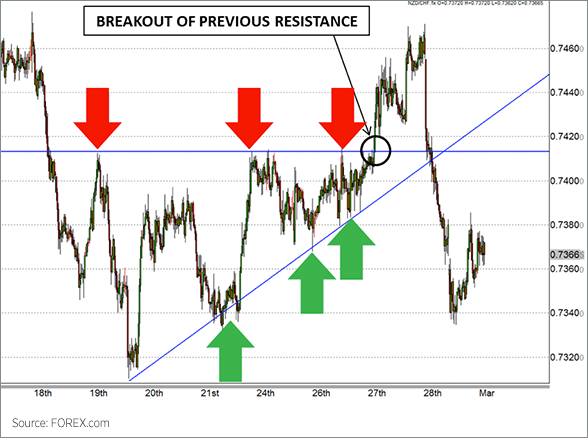Introduction
The labyrinthine world of options trading is awash in an ever-evolving lexicon of terms, each carrying significant weight in the intricate dance of risk and reward. Among these enigmatic concepts, implied volatility stands tall, a beacon of understanding that illuminates the uncertain waters of option pricing. It’s a measure of the market’s perception of future volatility, a barometer of sentiment and a key ingredient in navigating the tempestuous seas of options trading. By unraveling the complexities of implied volatility, traders acquire a potent tool, a sixth sense that guides them through the murky depths of this intricate trading arena.

Image: www.pinterest.com
Delving into Implied Volatility
Implied volatility, in simplest terms, is a numerical representation of the market’s collective prediction of a stock’s future price fluctuations. It quantifies the degree to which traders anticipate the stock’s value to gyrate within a specified time frame. This anticipatory value plays a pivotal role in determining option prices, acting as a compass that steers traders towards potentially lucrative opportunities. Higher implied volatility signals a heightened expectation of price turbulence, leading to costlier options. Conversely, lower implied volatility indicates a calmer outlook, resulting in more affordable options.
Historical Volatility and the IV Rank
In the annals of options trading, historical volatility serves as a beacon of past price gyrations. It’s a statistical measure that quantifies the stock’s actual price fluctuations over a specified period. By scrutinizing historical volatility, traders gain insights into the stock’s inherent volatility profile, a crucial piece of the implied volatility puzzle.
The IV Rank, a metric that pits implied volatility against historical volatility, further enhances the trader’s arsenal. It reveals the relative position of implied volatility compared to its historical counterpart. An IV Rank above 1 indicates that implied volatility is elevated relative to historical volatility, suggesting a market anticipating heightened price swings. Conversely, an IV Rank below 1 implies that implied volatility is subdued, indicating a market expecting more tranquil price movements.
The VIX: A Market Mood Meter
The CBOE Volatility Index (VIX), a widely recognized market barometer, offers a panoramic view of the implied volatility landscape. It’s calculated using the implied volatility of S&P 500 index options, providing a pulse on the collective sentiment of the market. A surging VIX signals heightened anxiety, as traders flock to options to hedge against potential market turmoil. Conversely, a declining VIX suggests a more sanguine market outlook, as traders perceive diminished risks and unwind their protective positions.

Image: www.defensahonorarios.cl
IV’s Role in Option Pricing
Implied volatility is the linchpin that holds the intricate mechanics of option pricing together. It influences both the premium paid for an option and the potential payout it offers. Higher implied volatility results in costlier options, as the market anticipates greater price swings that could enhance the option’s value. Conversely, lower implied volatility leads to more affordable options, reflecting the market’s belief in a less volatile future.
Trading Strategies and Implied Volatility
Traders who master the intricacies of implied volatility gain an edge in the options arena. By comprehending the market’s volatility expectations, they can tailor their trading strategies to capitalize on market sentiment.
-
Selling IV: When implied volatility is elevated relative to historical volatility, traders may consider selling options to collect the premium paid by buyers seeking protection against anticipated price swings.
-
Buying IV: Conversely, when implied volatility is depressed, traders may explore buying options at a discount, betting that future volatility will rise, boosting the option’s value.
-
IV Crush: Traders must be cognizant of the “IV crush” phenomenon, where implied volatility tends to decline sharply following significant market events or earnings announcements. This volatility contraction can erode the value of purchased options, highlighting the importance of timing and strategy.
What Is Implied Volatility In Options Trading
Conclusion
Implied volatility is a multifaceted concept that serves as a gateway to understanding the complexities of options trading. By deciphering its intricacies, traders gain a deeper appreciation of market sentiment and can harness its power to navigate the turbulent waters of option strategies. The concepts explored in this article provide a solid foundation for further exploration, empowering traders to master the art of options trading and unlock the full potential of this dynamic financial landscape.






